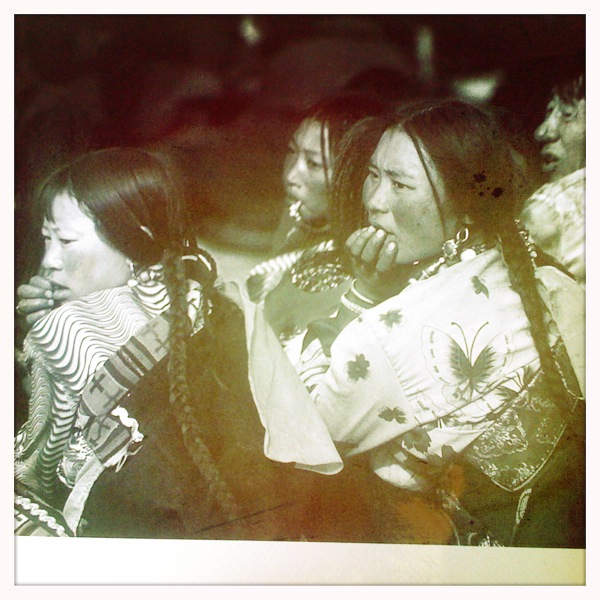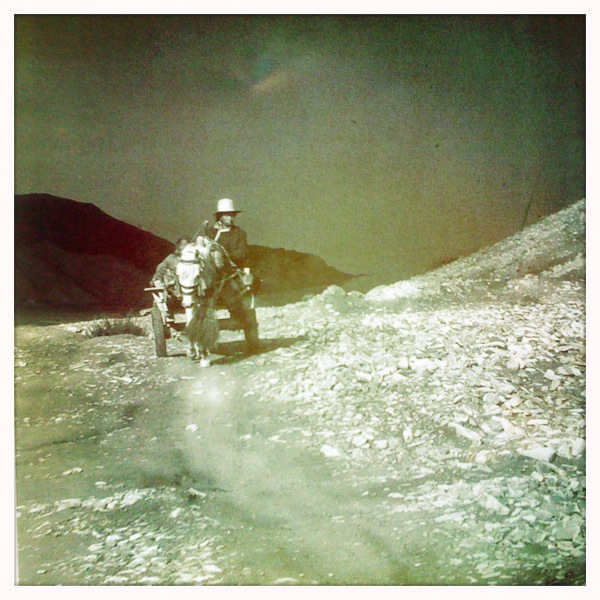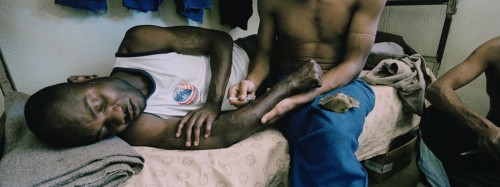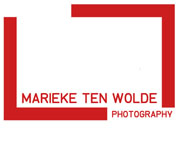Archive for the ‘Various Photography’ Category
In memoriam …
In memoriam… luckily this has nothing to do with anything serious.
It’s my personal computer, yesterday it has officially been declared dead by the repair shop. No computer also means no access to my photos, Photoshop or my texts for this week’s blog… All is backed-up, but to use a back-up one needs a computer, and the new one will only be ready this afternoon, hopefully.
But there are good things about not having a computer, yesterday I spent the afternoon cleaning out my book shelves and I found my photo album from my very first trip to Tibet in 1998, an album I had completely forgotten about. When flipping through it I realised once more how much has changed.
The wooden rooftops are now hard to find, they are largely replaced by corrugated iron. Those nomad women in front of the Yokhang? This year, due to the ongoing unrest, they probably will not even be allowed into Lhasa and if they are, they will not be allowed to sit down or gather in groups of more then 3 people. A man with a horse carriage? Now mostly replaced by tractors and that road has been paved many years ago.
(All pictures are made by me and reproduced with the camera on my mobile phone from the yellowish photo album)
We care about photography
.
No, this is not about a car boot sale.
The Noorderlicht Masterclass newspaper, ‘WE CARE ABOUT PHOTOGRAPHY’, has been printed and distributed. You can get your free copy, not from the back of a car in a dark parking space, but at the following locations:
Amsterdam: FOAM, Huis van Marseille, Pakhuis de Zwijger
Rotterdam: Fotomuseum, Kunsthal, NaI
Den Haag: Fotomuseum, GEMAK, Humanity House, Gemeente Museum
Utrecht: Centraal Museum
Groningen: Noorderlicht, Minerva
Alternatively, for all Dutch Fans of NoorderlichtHasToStay:
“De eerste 100 fans die een bericht achter laten op NoorderlichtHasToStay waarom Noorderlicht moet blijven krijgen de WE CARE ABOUT PHOTOGRAPHY krant GRATIS thuisgestuurd.”
You can also drop me an email or leave a comment…
The panoramic format in documentary photography (2)
With the purchase of a Hasselblad XPAN now quite a few years ago, my interest in photography using the panoramic format was raised. Since then I have tried different subjects, compositions and looked at many images using this format. One of the things I find most difficult is to get a good portrait using this format. The only example I have found so far that I really like are the images from Mikhael Subotski in his series ‘Die vier hoeke’. And maybe this is because the people are all lying down, which makes it easier to ‘fill’ the photograph.
If anybody can help me with some other good examples, please let me know!
.
.
The panoramic format in documentary photography
Last week I was asked (again), why do you use the panoramic format for so many of your photographs? Well, why do I do that? I sometimes wonder myself. It is not very handy; it is difficult to get published in magazines, it does not easily fit into books, there are no standard sized frames available, sometimes my film is messed up when the lab tries to cut my film, scanning is not straight forward etc etc. Normally I am quite a practical person, so why this rather ‘difficult’ format’?
Of course the very simple answer is, I like it. But why do I like it?
The panoramic format is not just a very long photo. Some photographers use it like that, just using the format to show a row of (often similar) things. This can be interesting, but to me also becomes boring very quickly. The same holds for images depicting something long and broad, like a row of houses, a train platform, etc.
The format becomes more interesting if the length is used to aid the composition or to show more information about the environment than would otherwise be possible, or to hold the clue of the image in one of the corners, so it is not revealed immediately. This does not mean that the picture could not contain ‘empty’ area’s, these could be used to add some quietness or to contrast with other parts in the image.
The worst composition for a panoramic format, in my eyes, is the picture where the main subject is placed somewhere in the middle and the image gives the impression that too much is included. The type of pictures that would be better off if cropped into the more common 2:3 or even square format.
Another way to compose a panoramic format image is to comprise more pictures into one picture. The picture could be cut into 2 or sometimes even 3 parts and each part of the picture could stand alone as well. A good panoramic image would then be the image where the sum of the parts is stronger than the individual parts. Jens Olof Lasthein in a master in these types of compositions, see some of his photo’s below.
Story Telling
Last Sunday I went to the Noorderlicht Photofestival 2011 in Groningen. It was a long trip to Groningen, and even though the NS added quite some delay, but it was definitely worth it.
The festival shows the work of 90 photographers with the subject ‘Metropolis, City Life in the Urban Age’. It is a very varied view on the subject with the photos beautifully exhibited in 3 locations in the city center.
I also went to the follow up of the PhotoStories conference (earlier this year in Rotterdam) with a presentation from Bjarke Mirthu of Storyplanet (you can find the slides he used on his blog: http://www.storyplanet.com/blog/ ), the presentations of 3 multimedia stories (Ilse Frech, Dirk Jan Visser, Ilvy Njiokiktjien) followed by a panel discussion.
Many aspects of Photo Stories, which nowadays more and more includes audio, video, graphics and text, were covered. Sometimes these other media are included to an extend that I was not sure anymore why it was still called a photo story, apart from the fact that the makers were, originally at least, photographers. Not that that really matters as long as the results is good and fits with the story.
However for myself it raises the question if I need to be more serious about the rather vague plans to also do some moving images and sound. With the work on Tibet I am now looking at producing text as well, although the result is far from satisfactory right now. I think quite soon it will not be enough anymore to ‘just’ concentrate on the images and that I will need to acquire a lot of new skill or end up in a small photo niche.
The main thing I took away from the conference is that:
– people like to listen to and see stories (as they have done for thousands of years);
– if the story is good and captivating you can find an audience, and that with the new media and the new ways of publishing (internet, iPad, etc) there is a wider range of options available to the photographer;
– that audience might even be willing to pay for the story, although that remains a struggle as was pointed out by as well the audience as the panel.











